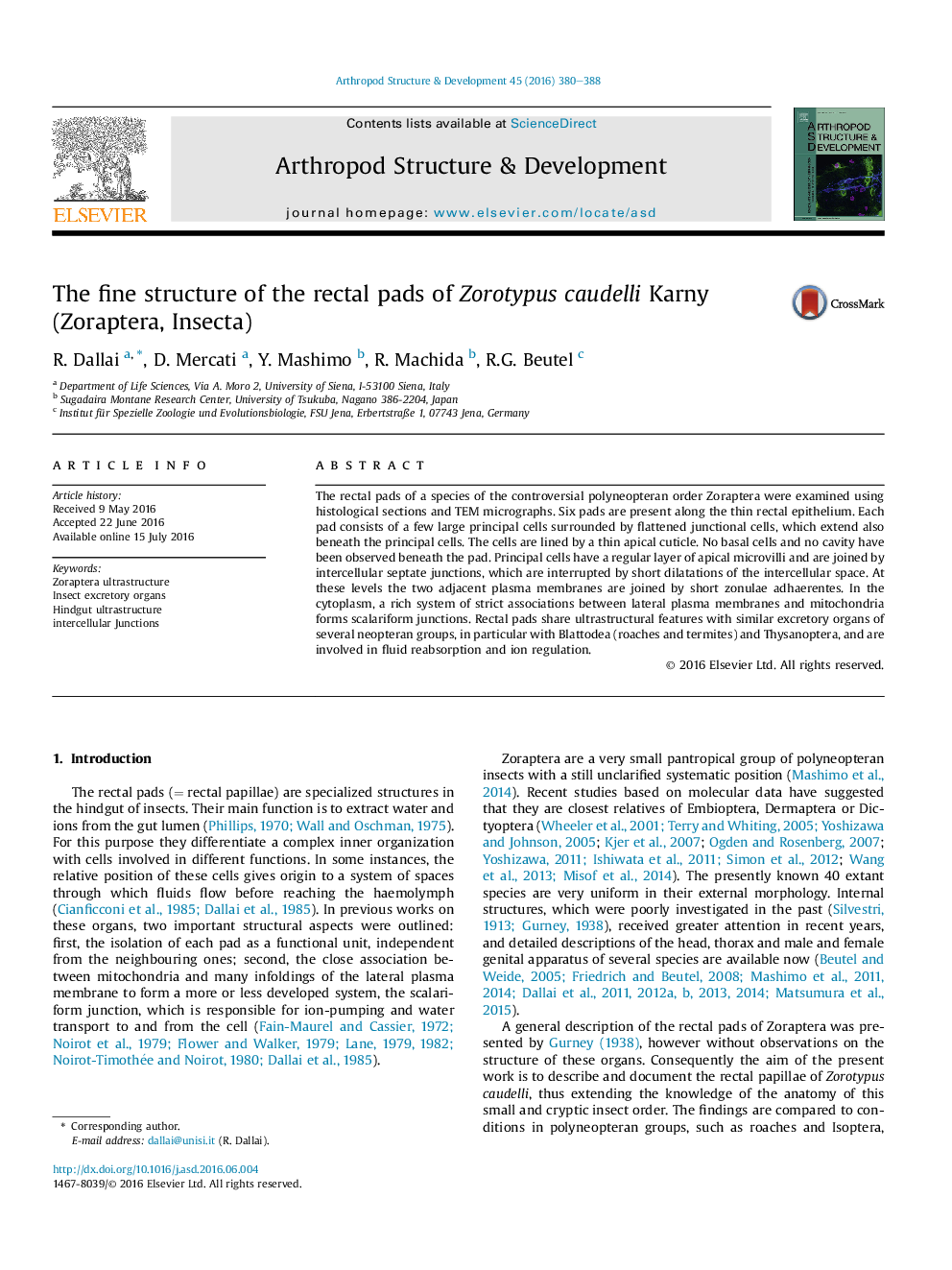| Article ID | Journal | Published Year | Pages | File Type |
|---|---|---|---|---|
| 2778483 | Arthropod Structure & Development | 2016 | 9 Pages |
•The organization of the rectal pads of Zoraptera consists of principal and junctional cells.•Principal cells have numerous complexes of mitochondria-plasma membranes with scalariform junctions.•The cytoplasmic structural specializations suggest water reabsorption and ion regulation.•Zoraptera have specialized rectal pads similar to Blattodea (roaches and termites) and Thysanoptera.
The rectal pads of a species of the controversial polyneopteran order Zoraptera were examined using histological sections and TEM micrographs. Six pads are present along the thin rectal epithelium. Each pad consists of a few large principal cells surrounded by flattened junctional cells, which extend also beneath the principal cells. The cells are lined by a thin apical cuticle. No basal cells and no cavity have been observed beneath the pad. Principal cells have a regular layer of apical microvilli and are joined by intercellular septate junctions, which are interrupted by short dilatations of the intercellular space. At these levels the two adjacent plasma membranes are joined by short zonulae adhaerentes. In the cytoplasm, a rich system of strict associations between lateral plasma membranes and mitochondria forms scalariform junctions. Rectal pads share ultrastructural features with similar excretory organs of several neopteran groups, in particular with Blattodea (roaches and termites) and Thysanoptera, and are involved in fluid reabsorption and ion regulation.
